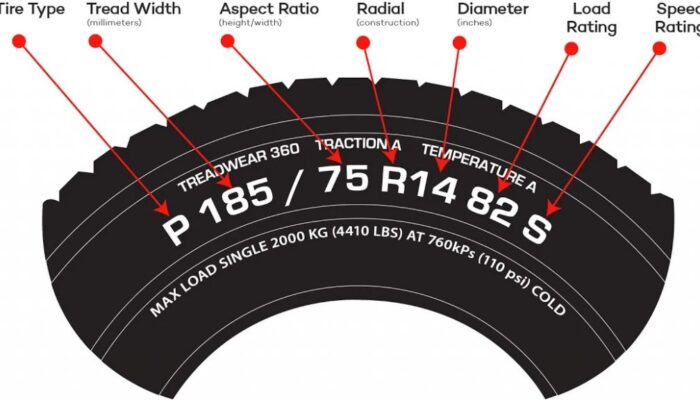Uzone.id – Ever noticed those rows of numbers and letters on the sidewalls of your car tires? More than just for decoration, these are codes carrying important information on the specification of tires, which is quite useful to vehicle owners. Although these may appear rather complicated, with the right understanding, you can easily work out how to read and get across the meaning of each code.
Why Are Tire Codes Important? Knowing tire codes is very important because it helps you in selecting the right tires for your particular vehicle. Information contained within pertains to tire size, load index, speed index, material used to make the tire, and even production date. A proper selection will improve the performance of your car, increase driving safety, and prolong the life of the tire itself.
Commonly, the code consists of a combination of several parts; each part usually bears a different meaning altogether. Briefly, this is what each part of the tire code represents:
Each tire has a size code on the wall of the tire. Generally, the sizes vary in width, side height ratio, and construction to diameter. Every size takes different units; for example, the width of the tire is usually in millimeters and it represents the size of the tire tread width. While the diameter of the tire or rim is usually in inches to suit the tire.

The side height ratio is the size showing the ratio between the height of the tire side and the width of the tire tread. Construction – The code is usually given in the form of the letter “R” showing a radial tire.
Then there is a code regarding the load index, usually expressed in the form of numbers, the load index indicates the maximum load that can be borne by the tire at a certain speed.
Meanwhile, the speed index is expressed in the form of letters, the speed index indicates the maximum speed that the tire can reach under certain conditions.
The last tire code is the production period, this code consists of four numbers, the first two numbers indicate the week of production, and the last two numbers indicate the year of production.
For example, let’s look at the following tire code: 205/55R16 91V.
- 205: The tread width of the tire is 205 mm.
- 55: The tire size height ratio is 55% of the tire tread width.
- R: Radial construction tire.
- 16: The rim diameter is 16 inches.
- 91: Load index, indicating the tire can withstand a maximum load of 615 kg.
- V: Speed index, indicating the maximum speed that can be achieved is 240 km/h.
In addition to the codes above, there are some other codes you may encounter on tires, such as material codes. Usually, the material code indicates the material used in making the tire, such as nylon or polyester.
There is also a taper code that indicates the degree of slope of the tire side. Not to forget, some tires also display a braking code that defines the tire’s braking ability.
“Choosing the right tire is like choosing the right shoe. Tire codes are size clues that will ensure optimal comfort and performance of your vehicle,” said Mario Andretti, Formula 1 World Champion.
Understanding tire codes is an important step in choosing the right tires for your vehicle. By knowing what each code means, you can make better decisions and ensure your driving safety. In addition, choosing the right tires can also improve fuel efficiency and driving comfort.
“Tire codes are an international standard that aims to ensure uniformity of information and make it easier for consumers to choose tires,” said Max Mosley, Former FIA President.













